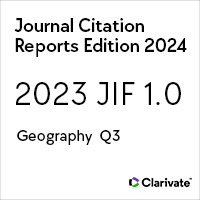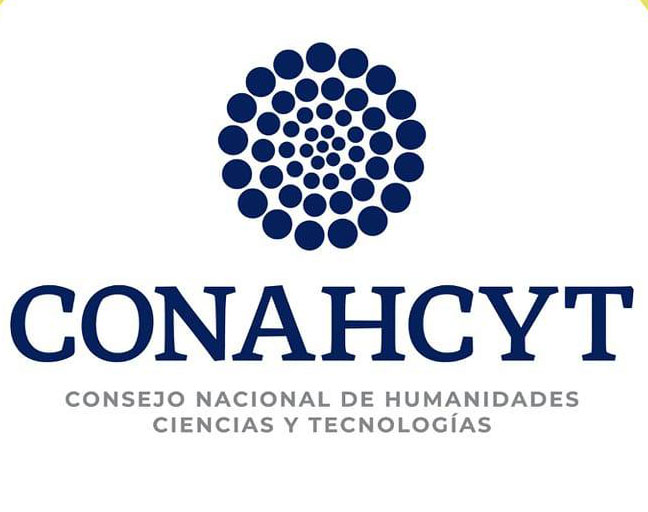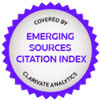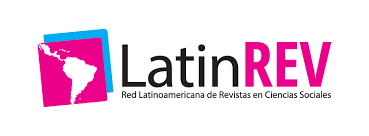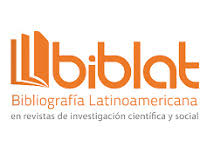Basic criteria for a sustainable water management at the U.S.-México border: the case of ambos Nogales
Criterios básicos para una gestión sustentable del agua en la frontera EE. UU.-México: El caso de ambos Nogales
https://doi.org/10.21670/ref.2003.07.a02
Keywords:
Sustainability, Binational Water Management, Ambos Nogales RegionAbstract
This article aims to analyze some basic criteria for a sustainable use of water in an international watershed shared by Mexico and the United States. The study area comprises the region of Ambos Nogales, which is located inside the Upper Santa Cruz River Basin. This portion of the watershed represents the main ecosystem and the main source of water for urban and rural populations located in this region. Following criteria of sustainability the authors revise and adapt to the case of Ambos Nogales, a set of guidelines proposed by the Pacific Institute for Studies in Development, Environment, and Security. These guidelines include the following elements: basic water requirements needed to maintain quality of life in the population and the health of ecosystems; water quality that meets certain minimum standards; human actions and their impact on long-term renewability of freshwater stocks and flows; collection of data concerning water resources, use and quality of water; institutional mechanisms to prevent and resolve conflicts; and a democratic process of water-planning and decision-making. These twin cities have a long history of cooperation and conflict linked to water resources, which makes available enough information to create a diagnostic about the water management inside a binational arena, and allowing to explore possibilities for a better water resources management under a sustainable regime and from an international perspective. Keywords: Sustainability, binational water management, ambos Nogales region.Resumen
En este artículo se analizan algunos criterios básicos para el uso sustentable del agua en una cuenca internacional localizada en la frontera de México con los Estados Unidos de Norteamérica. El área de estudio comprende la región conformada por las ciudades de Nogales, Sonora y Nogales, Arizona y conocida como Ambos Nogales y localizada dentro de la cuenca alta del Río Santa Cruz. Esta subcuenca representa el principal ecosistema y la principal fuente de agua para la subsistencia de las poblaciones rurales y urbanas de ambos países. En este estudio se retoman algunos principios básicos de sustentabilidad desarrollados por el Pacific Institute for Studies in Development, Environment, and Security y adaptados pare el caso de Ambos Nogales. En general, estos criterios comprenden los siguientes elementos: requerimientos básicos para sostener la calidad de vida de los pobladores y la salud de los ecosistemas; calidad del agua que reúna estándares mínimos en calidad y cantidad; las acciones de la humanidad y sus impactos en la tasa de renovabilidad; colección de datos del recurso agua; procesos democráticos en la planeación y en la toma de decisiones y por último los mecanismos institucionales para la resolución de conflictos. Ambos Nogales cuentan con una larga historia de cooperación y conflicto ligadas al uso y manejo del agua. Este hecho hace posible el contar con suficiente información para en primera instancia generar un diagnóstico sobre el manejo del recurso agua en una arena binacional, permitiendo explorar las posibilidades para un mejor manejo del agua bajo un régimen sustentable y desde una perspectiva internacional.References
Alegría, T. 1990. Ciudad y Transmigración en la Frontera de México con Estados Unidos, Frontera Norte 2(4): 7-38.
Barrios, J.L. and L.E. Cervera. 2000. «Medio Ambiente y Conformación Urbana de la Ciudad de Nogales», mimeo.
Cervera, L.E. 1997. “Planeación de la Demanda de Agua en Nogales, Sonora: La Sustentabilidad de su Utilización en una Región”, in: en Ma. Gpe. García y Alejandro Mungaray (eds.), Desarrollo Fronterizo y Globalización, ANUIES, Universidad de Sonora y Colección Biblioteca de Educación Superior, pp. 185-198.
COCEF. 1996. “Formato Para la Presentación de Proyectos”. Proyecto Integral Para Uso de Agua Potable, Tratamiento y Recarga en Nogales, Sonora.
Hogan, P. 1993. “Capacidad de Carga Poblacional: rehabilitando un concepto”, in Izazola H. and S. Lerner (eds.), Población y Ambiente, Mexico, D.F., pp. 84-85.
IBWC. 1998. Binational Nogales Wash Unites States/Mexico Groundwater Monitoring Program Interim Report, pp. 5.
[Online] Available at: http://www.ibwc.state.gov/Files/Nogwashr.htm
Ingram, H. N.K. Laney, N.K. and D.M. Gillian. 1995. Divided Waters: Bridging the U.S.-Mexico Border, The University of Arizona Press; Tucson, Arizona.
Loucks, D. y J. Gladwell. 1999. Sustainability Criteria for Water Resource Systems, United Kingdom: Cambridge University
Press.
Morehouse, B., R. Carter, T. Sprouse. 2000. “The Implications of Sustainable Drought for Transboundary Water Management in Nogales, Arizona, and Nogales, Sonora”. Natural Resources Journal, 40: 783-817.
Morrison, J., S. Postel and P. Gleick. 1996. “The Sustainable Use of Water in the Lower Colorado River Basin”. A joint report of the Pacific Institute for Studies in Development, Environment and Security and the Global Water Policy Project.
OECD. 1998. Toward Sustainable Development: Environmental indicators. France: OECD publications.
Patten, D. 2002. “Development of best management practices for water and riparian resources along the Santa Cruz Watershed”, U.S./ Mexico Border. SCERP Project Number: P-18.
Pick, J., N. Viswanathan and J. Hettrick. 2001. The U.S.-Mexican Borderlands Region: a binational spatial analysis”, The Social Science Journal (38): 567-595. DOI: https://doi.org/10.1016/S0362-3319(01)00152-5
Rubio, R. 2001. “Movilidad Temporal Laboral en la Frontera Norte de México, 1995”. Treballs de la Societat Catalana de Geografía (51): 153-176.
Sprouse, T., D. Cory and R. Varady. 1996. “Aquifer Contamination and Safe Drinking Water: the Recent Santa Cruz County
Experience”, Hydrology and Water Resources in Arizona the Southwest (26).
Samson, P. and B. Charrier, 1997. International Freshwater Conflict: issues and prevention strategies. [Online] Availabe at : http://dns.gci/water/gcwater/study.html Schwalen, H.C. and R.J. Shaw. 1957. Groundwater Supplies of Santa
Cruz Valley of Southern Arizona Between Rillito Station and the International Boundary. University of Arizona, Tucson.
Woodard, D. and R. Durall. 1996. United Sates-Mexico Border Area, as Delineated by a Shared-Water Resources Perspec-tive. United States Department of the Interior, Fact Sheet 1, February.






